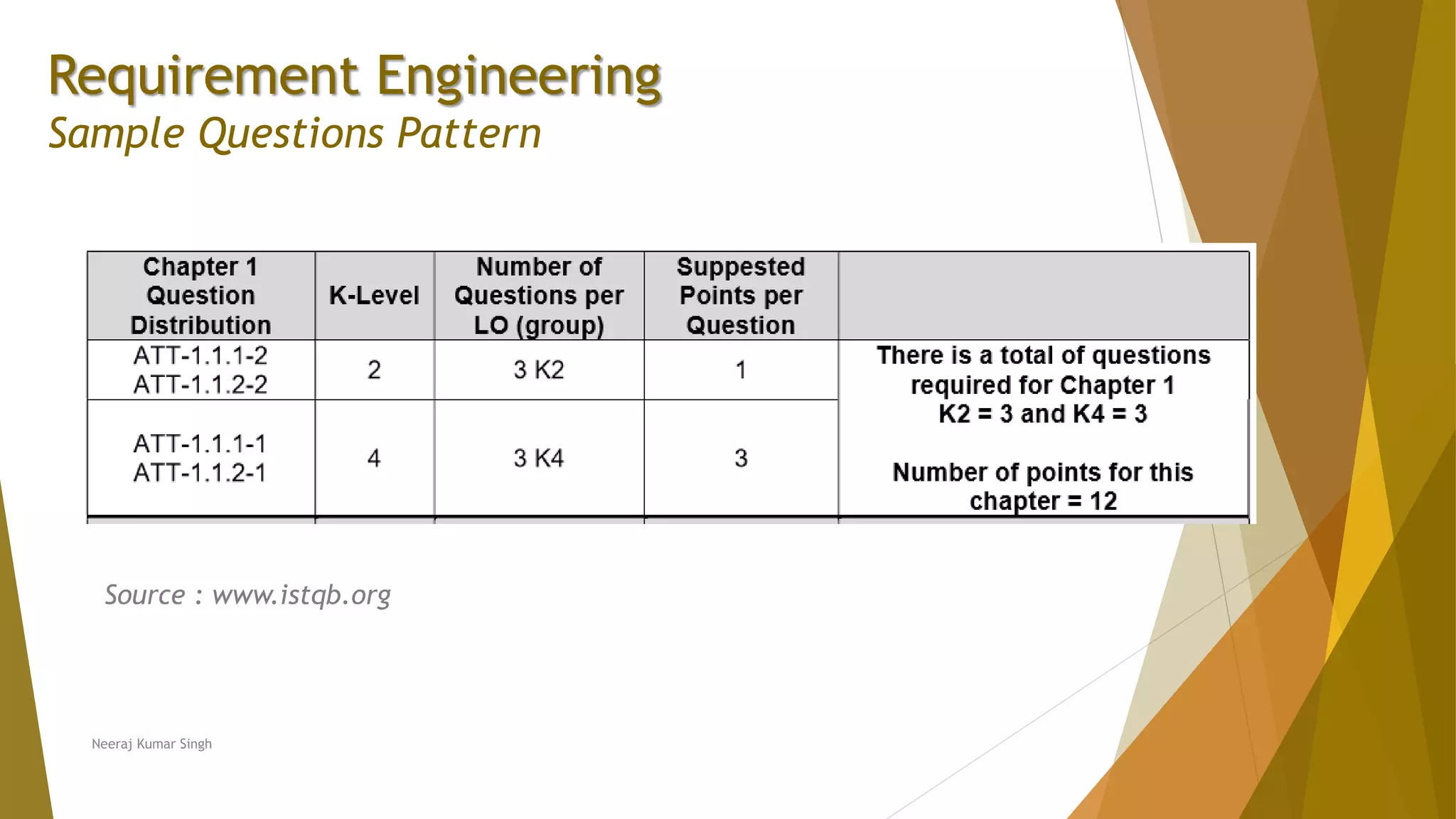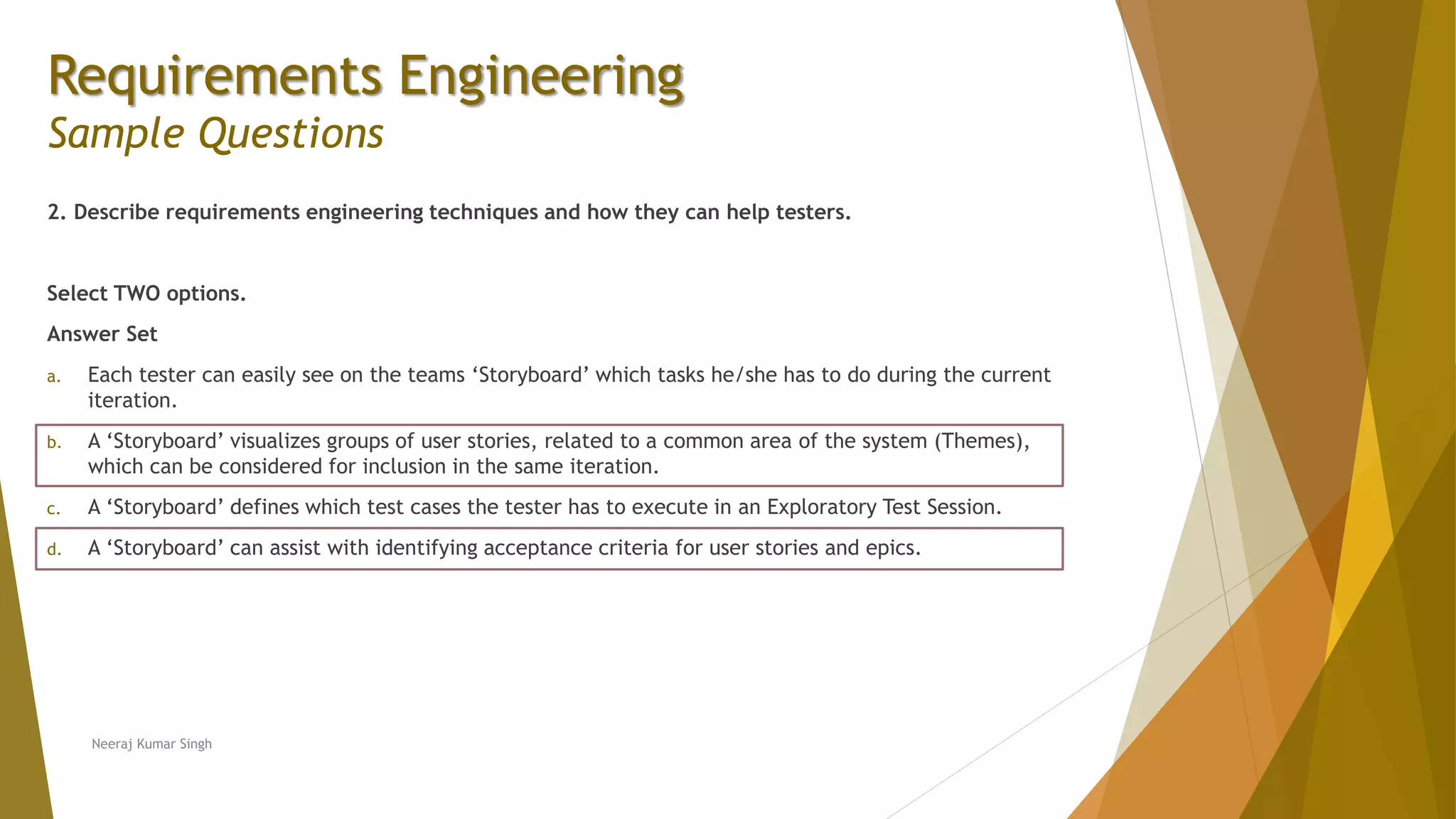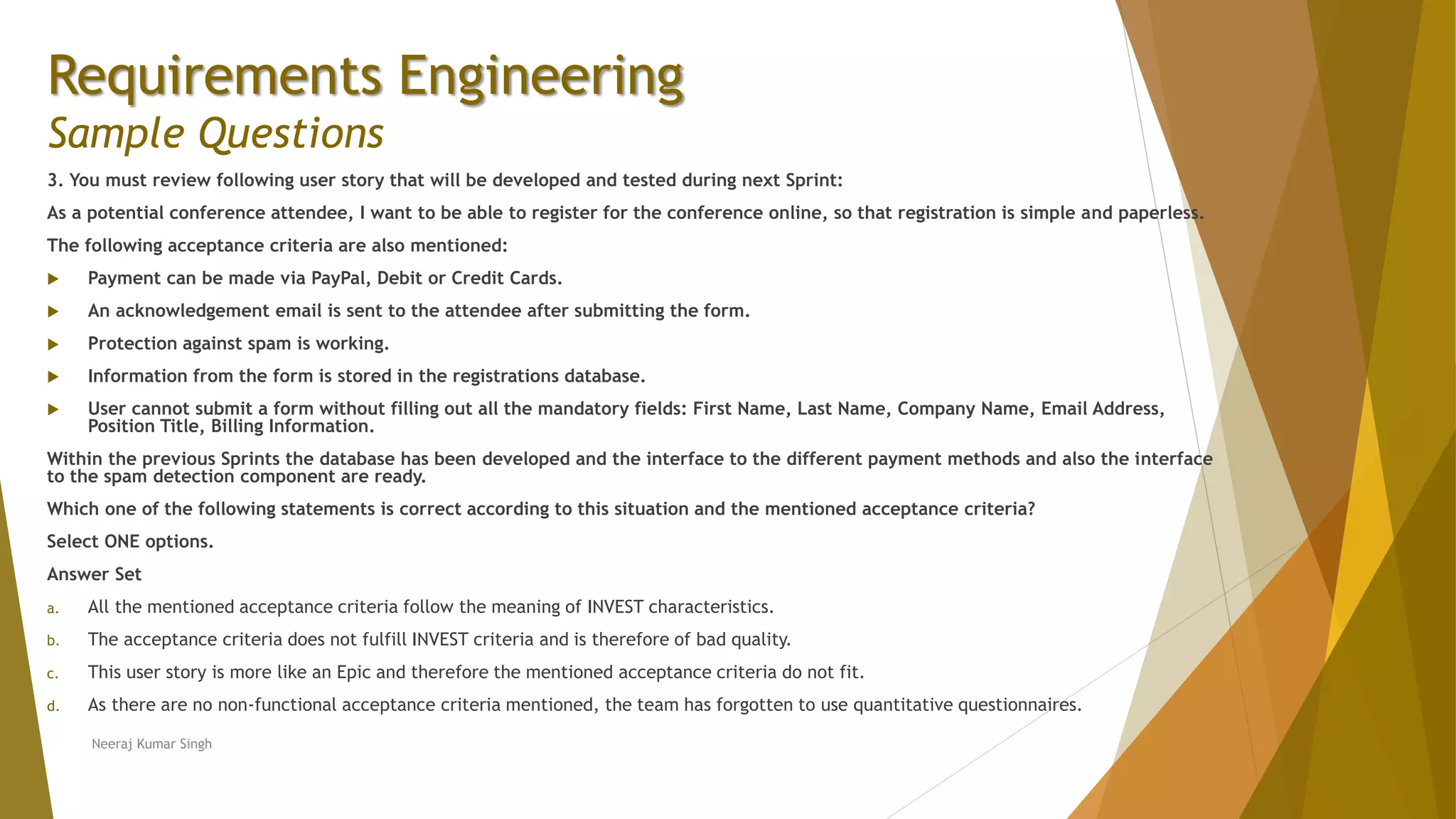This document focuses on requirements engineering techniques in an Agile context, emphasizing their application in analyzing user stories and epics. It discusses various techniques such as storyboards, story mapping, personas, diagrams, and use cases, and how they can aid in identifying gaps and acceptance criteria. Additionally, it outlines the process of identifying acceptance criteria through elicitation, documentation, negotiation, and management, highlighting various methods to improve the clarity and quality of user stories.
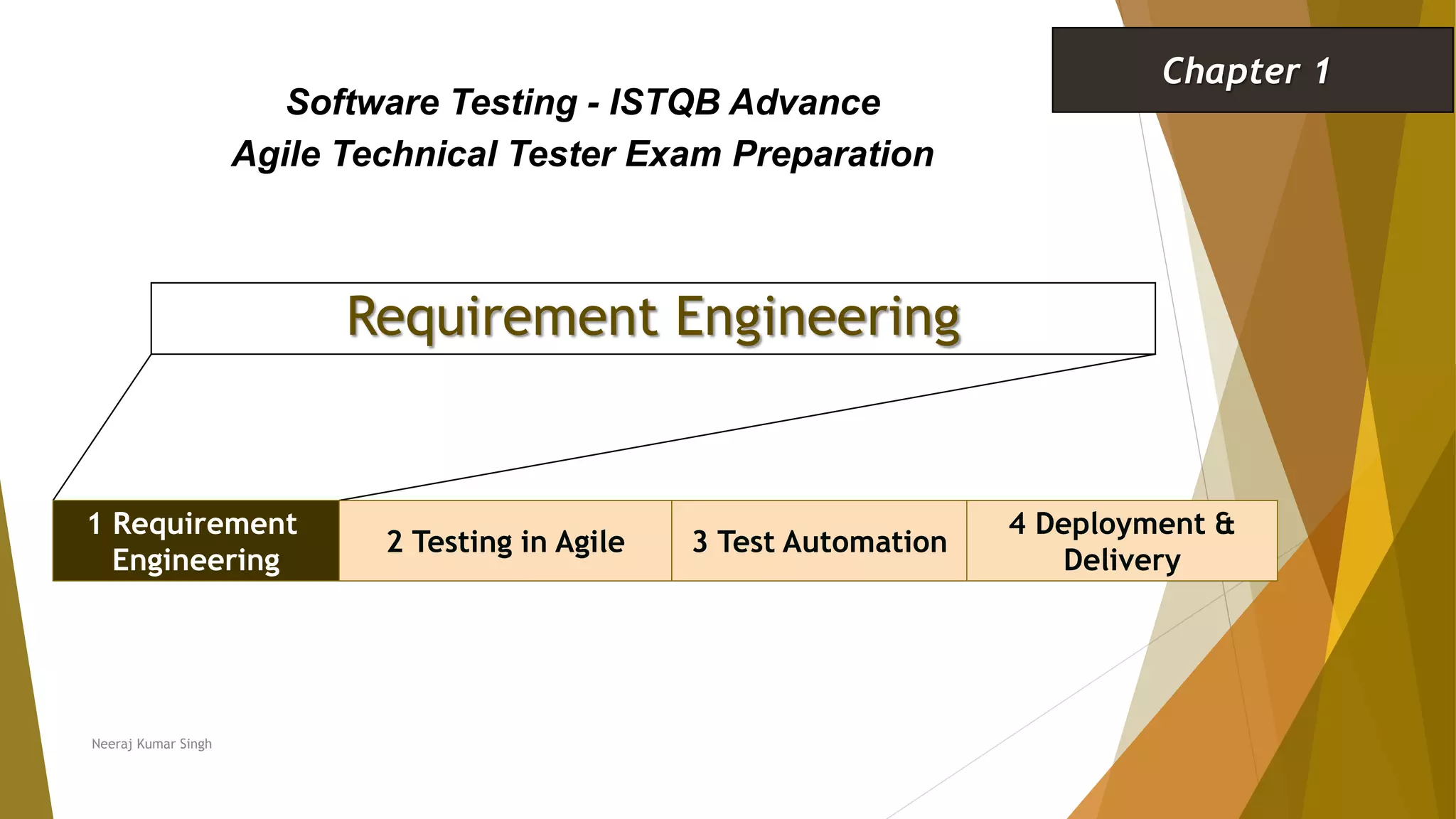
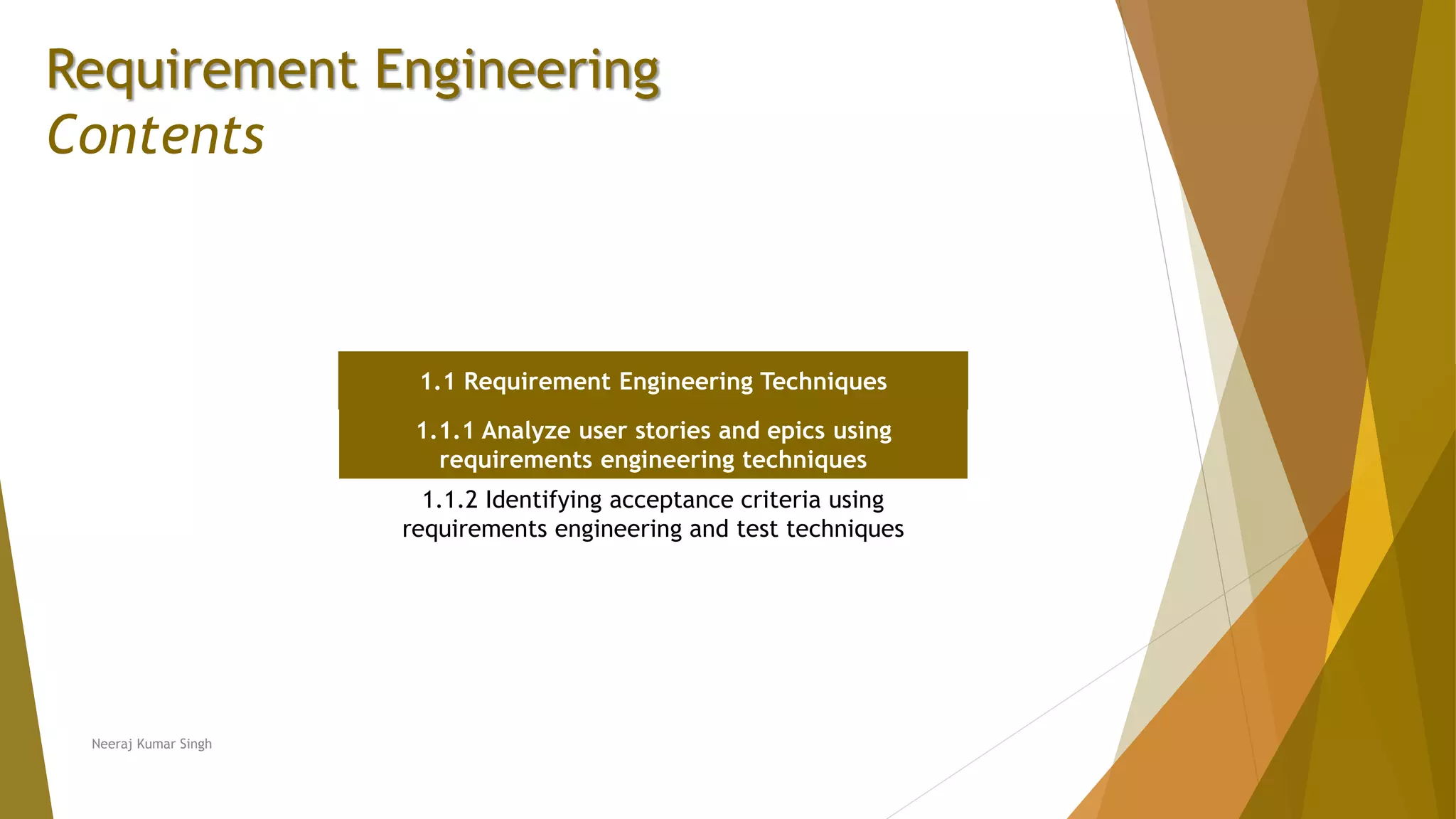
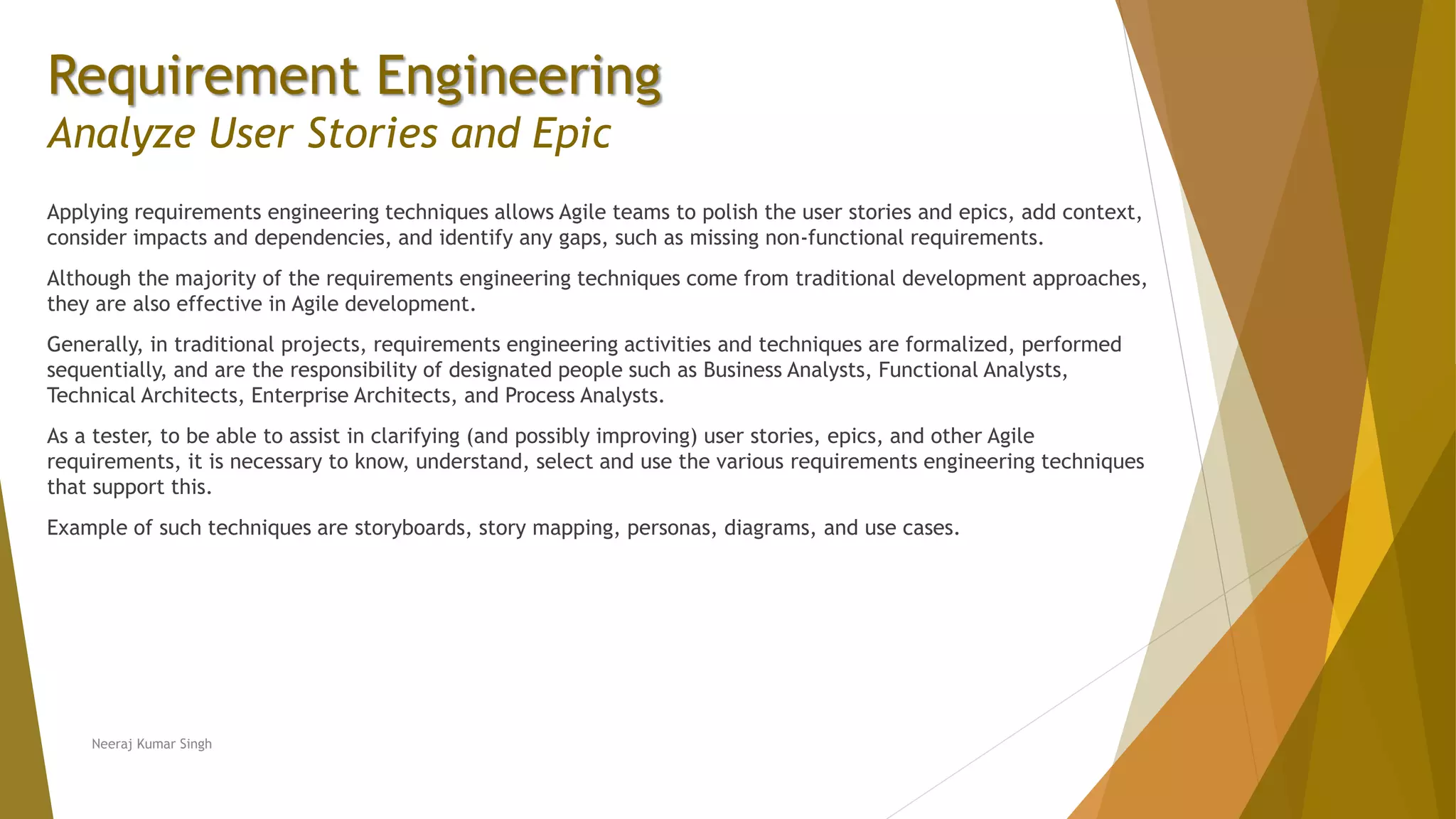
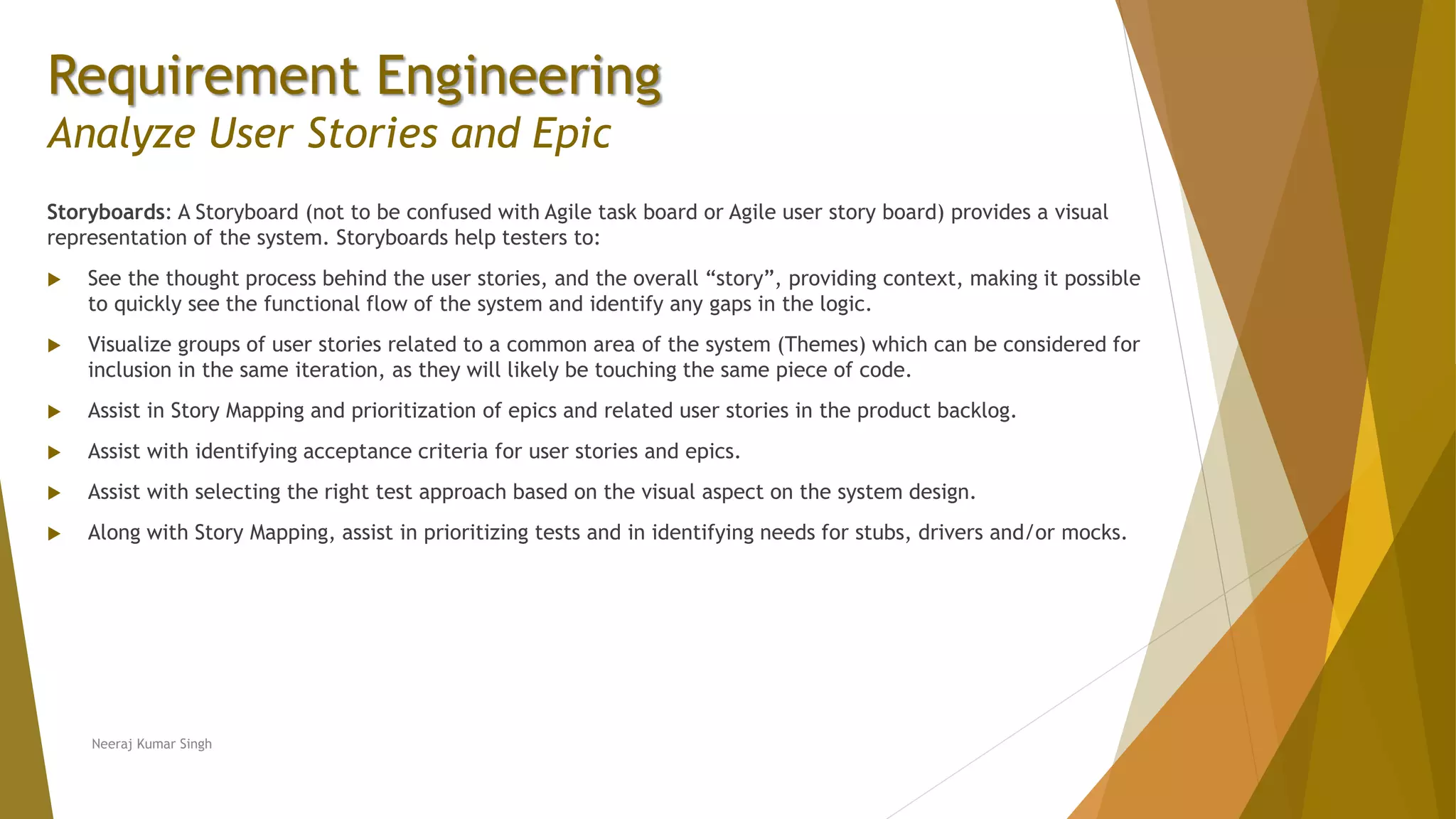




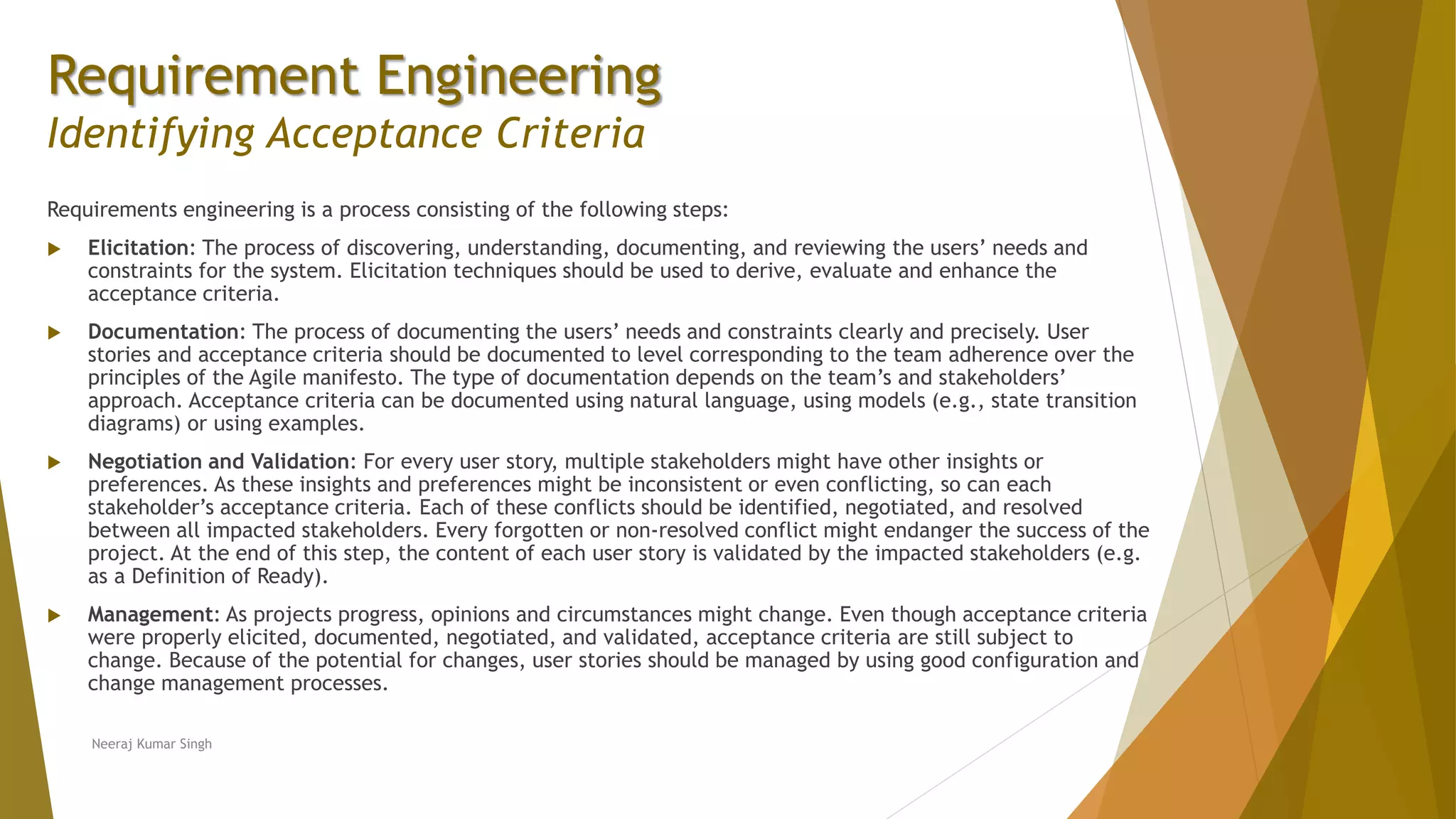
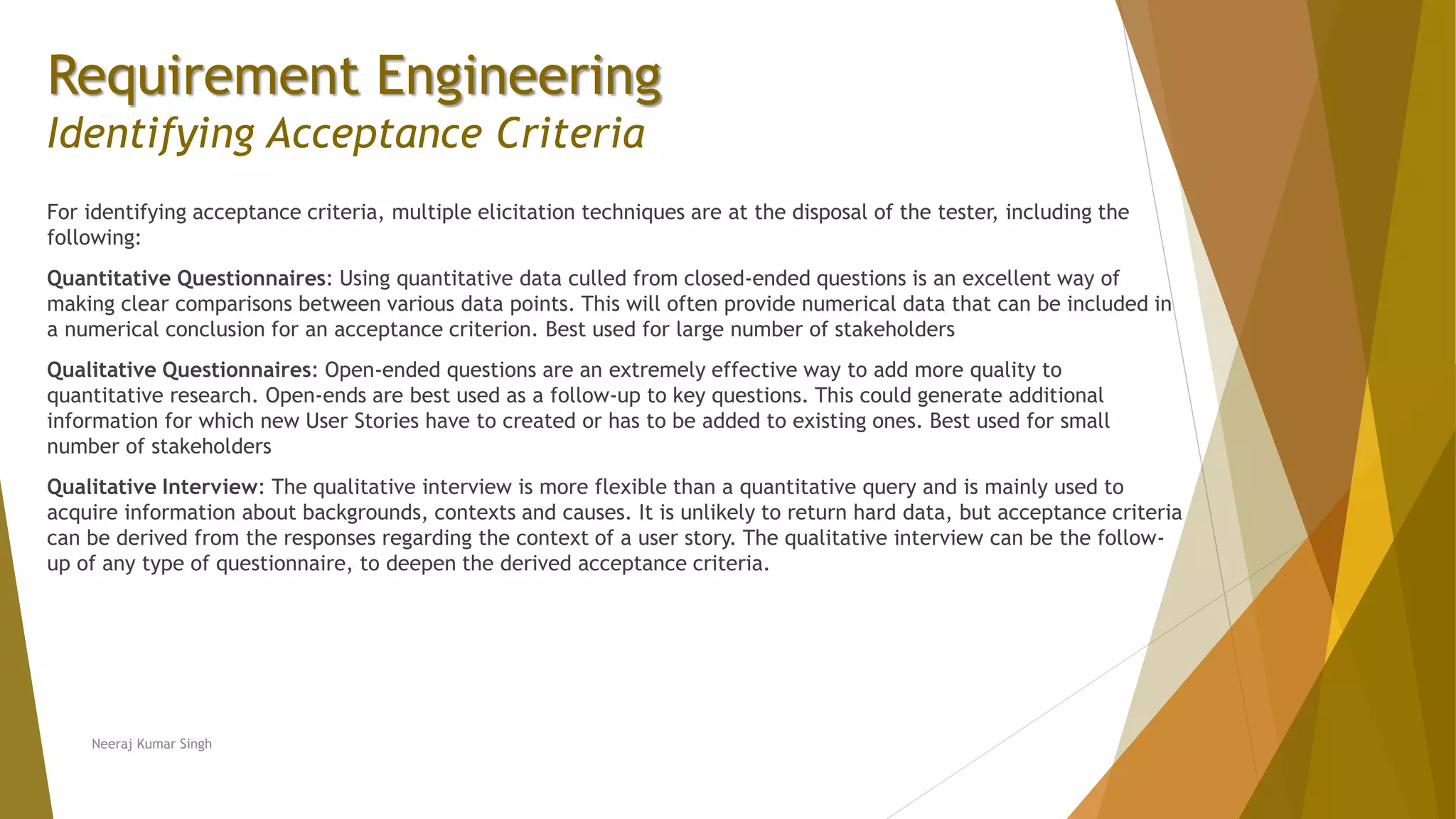
![Requirement Engineering
Identifying Acceptance Criteria
Multiple other elicitation techniques exist, in the range of observation techniques (e.g. apprenticing), creativity
techniques (e.g. 6 Thinking hats) and supporting techniques (e.g. low-fi prototyping). The technique toolset of the
tester will influence the quality of the elicitated acceptance criteria.
INVEST and SMART [INVEST], along with test techniques such as equivalence partitioning, boundary value analysis,
decision tables, and state transition testing
Neeraj Kumar Singh](https://image.slidesharecdn.com/chapter1-requirementengineering-200719110808/75/Chapter-1-Requirement-Engineering-11-2048.jpg)

